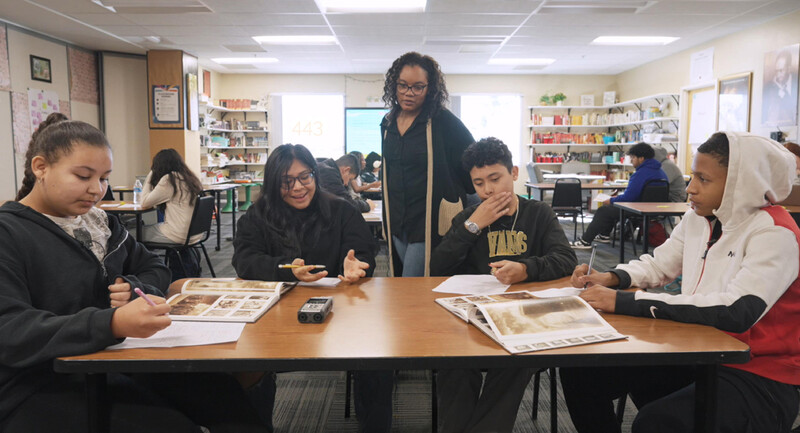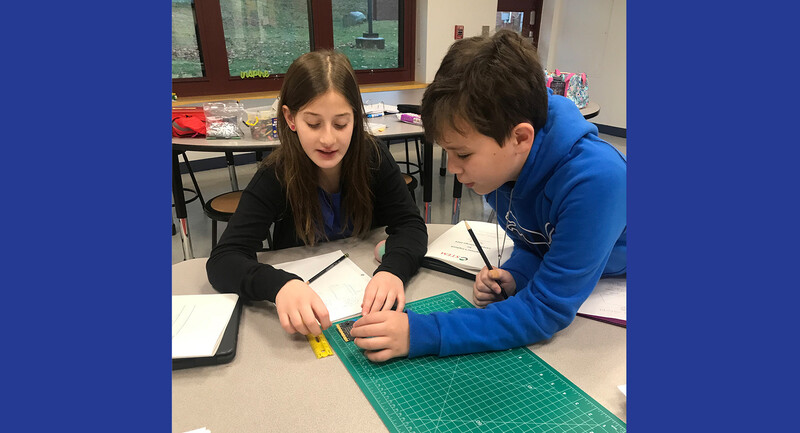If you walk into a classroom today, you are likely to hear content-based questions being asked by the teacher … and being answered by the teacher. This traditional instructional model often includes lobbing perfunctory and simplistic questions to the class as a whole, without expecting or eliciting a real answer. To avoid this ineffective pattern, we need to strategically design our lessons to include manageable amounts of content, intentional questioning, and tasks that give students time to process and discuss their responses.
One of the more user-friendly and effective approaches used in education is chunk and chew—breaking content into small pieces and giving students adequate time to process it. The addition of the element of assessment can create the even more concrete, not to mention alliterative, chunk and chew and check model. What this model does not include, though, is the opportunity for meaningful questioning that enables students to grapple with the content and express their emerging understanding in a way that promotes engagement and discussion. In order to incorporate all of these necessary elements, we need to move toward a five-phase chunk-challenge-chew-chat-check model.
Chunk: Teachers need to plan to chunk content into slices of no more than about 10 minutes to ensure that students are engaged. Within a short chunk of deep content, teachers can ask for students' full attention. The chunk phase is teacher centered and content rich.
Challenge: Teachers can then use the challenge phase to present a single or small handful of targeted questions or tasks to guide students to delve deeper into the content. The challenge phase can range from questions that involve very simple recall to tasks that involve higher-order thinking and complex academic skills, depending on the timing within the lesson or the structure of the unit. The important thing is that the teacher plans these questions or tasks beforehand and reserves a time within the lesson to pose them to the class.
Chew: The chew phase allows students to process information and engage their minds in the challenge. This phase may be 30 seconds of think time in a think-pair-share activity or 10 minutes of individual writing time, but the premise is the same: students require time to process a rigorous content-based challenge. If the challenge is engaging, the students will welcome this time to ponder the content and begin to formulate an expression of their understanding.
Chat: Structured classroom talk gives students the chance to practice academic language, build discussion skills, and increase their understanding. The chat phase is two-fold: it is a time when students have the opportunity to express their emerging understanding and a time when the teacher can assess, probe, and engage students in both spontaneous and structured dialogues that scaffold understanding.
Check: Though both the chew and chat phases of this model provide teachers with multiple opportunities to assess student understanding, nothing is as informative as a targeted check for understanding. At the end of each chunk-challenge-chew-chat cycle, teachers can conduct numerous cold calls or ask all students to briefly respond in writing to a targeted question, sketch a diagram, or simply give a quick thumbs up or down to a yes/no question.
A Classroom Example
This approach is especially effective for English language learners (ELLs) who often fall behind when the delivery of content outpaces their ability to process it and express their understanding.
When teaching ELLs how to write a thesis statement, for instance, I may start out by spending about 10 minutes explaining and providing examples of the SORT concept—subject + opinion + reason = thesis (the chunk phase). I would then challenge students by giving them a subject like school uniforms and a sentence starter, such as "School uniforms are [opinion] because [reason] and [reason]," to help them write their own thesis statement (the chew phase). Next, I would task them with sharing and comparing their sentences (the chat phase) and posting them on the board to review as a group (the check phase). I could then reteach as needed, or start the next chunk phase.
Figure
Would you like to write for the next "Road Tested" column? Visit www.ascd.org/educationupdate for submission details.








